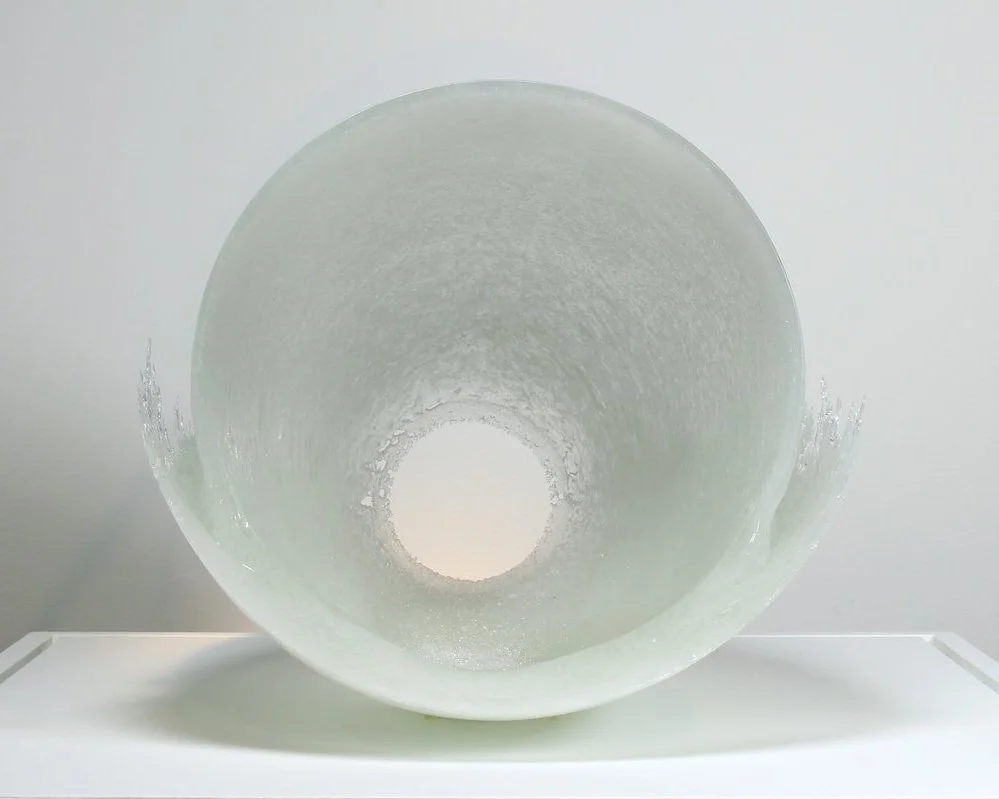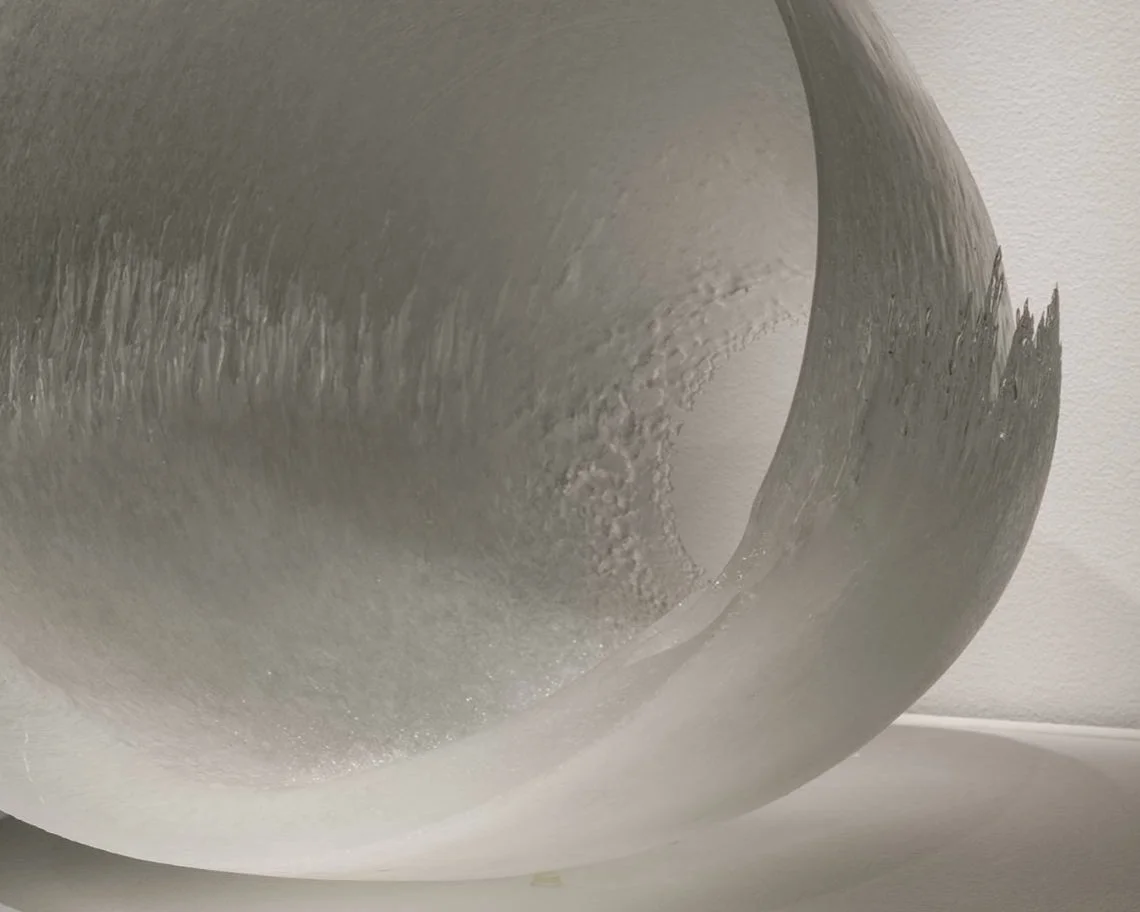On View:
MEDITATIONS IN GLASS
by Regina Mamou, Director of Art Muse LA, 1 March 2023.
Image Credit: Masahiro Asaka (b. 1979, Chiba, Japan). Surge 1.2, 2011. Cast glass and pâté de verre, 17 x 18 x 22 1/2 in. (43.18 x 45.72 x 57.15 cm). Palm Springs Art Museum (Palm Springs, CA). Photograph by Lance Gerber. direct link.
Beginning on March 2, 2023, California's Palm Springs Art Museum will feature the exhibition Meditations in Glass with work from the museum's permanent collection. Curated by Tina Oldknow, former senior curator of modern and contemporary glass at The Corning Museum of Glass (Corning, NY), Meditations in Glass features over 20 artists working in this medium.
Here at Art Muse LA, we have the opportunity to research, present, and share our love of all different types of art in every kind of material imaginable. But one medium we don't encounter enough of is glass. Through Meditations in Glass, we had the opportunity to research several new artists who work with the medium and learn more about glass techniques.
Masahiro Asaka is one artist who has mastery over the medium. Born in Japan, Asaka (b. 1979) first trained at the Tokyo International Institute of Glass Art before moving to Canberra to earn his graduate degree at The Australian National University School of Art. Asaka is known for his technical skills in glass. This is demonstrated by his complex and varied techniques in a single work. For Asaka's Surge 1.2 (2011) from the Palm Springs Art Museum's collection, the artist uses both cast glass and pâté de verre (defined below).
Image Credit: Masahiro Asaka (b. 1979, Chiba, Japan). Surge 1.2, 2011. Cast glass and pâté de verre, 17 x 18 x 22 1/2 in. (43.18 x 45.72 x 57.15 cm). Palm Springs Art Museum (Palm Springs, CA). direct link.
To make this work, Asaka builds an interior and exterior mold from plaster-silica, creating, forming, and holding the shape. This construction includes a frame around the piece that supports the mold. To add texture to the work, he uses diatomaceous earth, a sandy, powdery material made of fossilized algae. Once the mold is complete, Asaka fills the form with glass pellets, which will be melted down in a kiln. To achieve the right results, the kiln is raised to a temperature of 1472 °F (800 °C) and must maintain an even temperature throughout the kiln process – this means that the temperature cannot fluctuate by more than 9 °F (5 °C). Once removed from the kiln and then cooled, Asaka reshapes the glass.
Image Credit: Masahiro Asaka (b. 1979, Chiba, Japan). Surge 1.2 (detail), 2011. Cast glass and pâté de verre, 17 x 18 x 22 1/2 in. (43.18 x 45.72 x 57.15 cm). Palm Springs Art Museum (Palm Springs, CA). Photograph by Lance Gerber. direct link.
Image Credit: Masahiro Asaka (b. 1979, Chiba, Japan). Surge 1.2 (detail), 2011. Cast glass and pâté de verre, 17 x 18 x 22 1/2 in. (43.18 x 45.72 x 57.15 cm). Palm Springs Art Museum (Palm Springs, CA). Photograph by Lance Gerber. direct link.
Part of Asaka’s process is utilizing the technique of pâté de verre. The Corning Museum of Glass describes pâté de verre (French, “glass paste”) as:
Image Credit: Masahiro Asaka (b. 1979, Chiba, Japan). Surge 1.2, 2011. Cast glass and pâté de verre, 17 x 18 x 22 1/2 in. (43.18 x 45.72 x 57.15 cm). Palm Springs Art Museum (Palm Springs, CA). direct link.
The results in Asaka's work are variable surfaces contained in one work of art. The overall aesthetic has the appearance of a naturally occurring form like ice and ice crystals while also taking on a unique shape with a hollow core. The differences in textures between the smoothness and roughness of the material further push the elements of the natural world, and especially of an ice sculpture. Ice lends this piece a visceral sensation of coolness even while being aware of the heat application needed to create the work.





